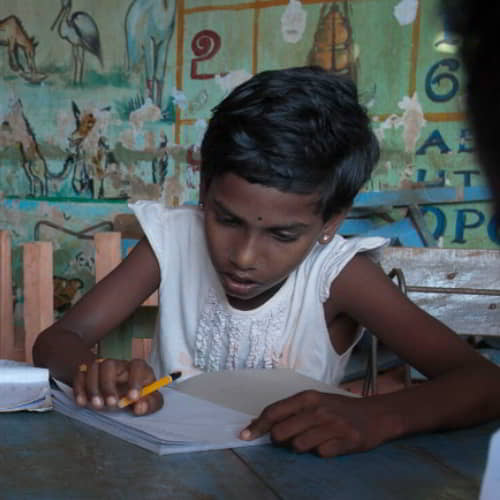Girls’ Education
Girls’ education is the cure for many social issues that plague the developing world. Whether it be in addressing poverty, child marriage, child labor, illiteracy, abuse, infanticide, violence or trafficking, ensuring education for children is the key to breaking the cycles that have often raged in the world’s poorest communities. When children can attend school consistently, they can dream of more, and they can see a way out of the cycle of poverty that consumes their peers and their parents. This is the motivation for those who fight for girls’ education globally, but it can be a difficult battle.
UNICEF reports,
“Around the world, 129 million girls are out of school, including 32 million of primary school age, 30 million of lower-secondary school age, and 67 million of upper-secondary school age.”1
There are many barriers to girls’ education, including the following:
Poverty – In many countries, school costs money to even attend, which is money impoverished families frequently don’t have. In other places, school is free, but there are necessary items such as school supplies, uniforms and other required resources that need to be purchased. Many families simply can’t afford to send their children to school.
Poverty mindset – A poverty mindset is also common. If a parent didn’t attend school, they are less likely to make education a priority for their children. This, along with other factors, causes the cycle of poverty to continue.
Child marriage – Girls who marry as children or in their early teens are more likely to stop their education and become teen mothers.
Gender-based violence – Walking to school is very dangerous for girls in many areas of the world. A study by the Global Women’s Institute estimated that in 60 million girls were sexually assaulted while traveling to school or while at school in 2012.2 This often leads to long-lasting mental and physical challenges and lower attendance at school.
Gender-based discrimination – When a family can only afford to send some of their children to school, boys are often selected.
Girls benefit greatly from education, but communities do as well. The World Bank reports that educated women marry at a later age, have fewer children, are better informed about nutrition and their children are usually healthier. In addition, educated women make more money than their uneducated peers.
A recent World Bank study estimates that the “limited educational opportunities for girls, and barriers to completing 12 years of education, cost countries between US$15 trillion and $30 trillion in lost lifetime productivity and earnings.”3 Educating girls helps break the cycle of poverty. That’s great motivation for promoting girls’ education.
Click here, to read more about this article.
Click here, to read more blogs in Gospel for Asia.Org

Comments
Post a Comment